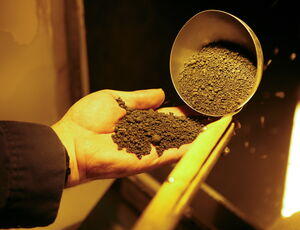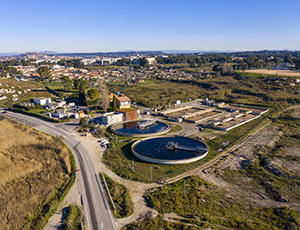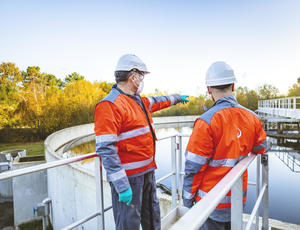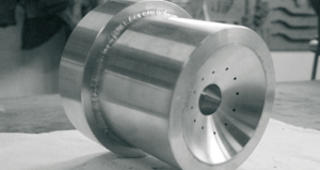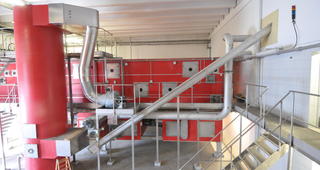Athos™ is a sludge hydrothermal oxidation (HTO) process that turns organic sludge with low dry matter into an essentially solid mineral.
Overview
Athos™ is based on the principle of hydrothermal oxidation (HTO), an oxidation process in liquid phase that involves heating an effluent to a high temperature and high pressure in the presence of an oxidizing gas (air or oxygen).
Athos operates under moderate conditions of temperature (235°C) and pressure (45 bar) to mineralize the organic matter in the sludge. This generates three stable and/or recyclable by-products:
- A gas, clean and free of dust, whose volume is considerably reduced compared to incineration.
- A biodegradable organic liquid that can easily be treated by the existing wastewater treatment plant.
- A primarily and highly mineral-based, recyclable solid, less than 10% of the initial amount of sludge.
How Athos works?
Using a high-pressure pump, the thickened sludge is brought up to a pressure of 45 bar. The pressurized charge then passes through a heat exchanger, where it is heated to 245°C. Once the HTO process is running, the thickened sludge is heated using the energy recovered from the Athos reactor itself. Oxygen is then introduced into the hot pressurized charge, resulting in an almost immediate oxidation reaction. The complete oxidation is achieved with less than one-hour retention time in the reactor. Organic matters present in the thickened sludge are converted into inert by-products (CO2, nitrogen, clean water and a mineral-based residue). The heat released by the oxidation reaction is recovered to pre-heat the sludge, with no external energy supply.
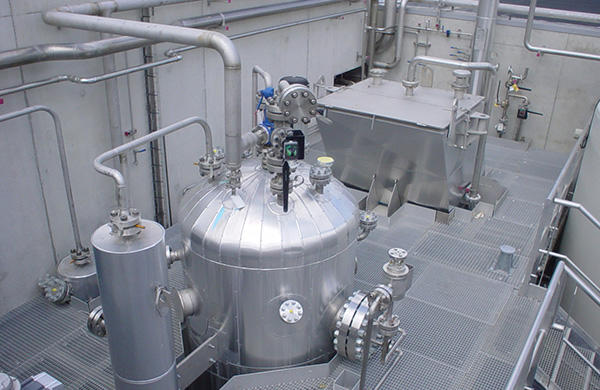
Athos complies with all regulations on the disposal of wastewater treatment sludge while remaining cost effective. Thanks to its compact design, the process can be fully integrated into municipal and industrial wastewater treatment plants and provides continuous sludge oxidation processing, as well as treatment of its by-products.
Features and benefits

High mineralization of thickened sludge (less than 5% organic carbon content in the solid residue).

Environmentally friendly: all the sludge components are recycled, recovered or discharged to the natural environment with no adverse effects.

Cost-effective: operating costs are reduced thanks to the moderate operating conditions (temperature and pressure, limited oxygen consumption) and by reducing the dewatering stage.

Flexible: treats all types of thickening sludge (7 to 8% of dry matters) and is equipped with advanced automation.
Applications
Contact
Athos is a proven, mature and stable technology with a 25-year track record. It can completely oxidize organic matter of sludge into inert solid in the liquid phase, achieving a more complete reduction while reducing the environmental impact of sludge. The process can be combined with anaerobic digestion to realize green energy utilization, optimize operation costs and reduce CO2 emissions. Today, Athos can be considered one of the best sludge treatment solutions for environmentally sensitive areas.

Vivian WANG
Solution Manager Sludge - Veolia Water Technologies China
FAQ about Athos™
What is hydrothermal oxidation?
Hydrothermal oxidation is the oxidation of organic substances in the aqueous phase using oxygen or air as oxidizing agent at elevated temperatures and pressures.
What is the main advantage of Athos over incineration?
Athos, with its low gas emissions, is much more socially acceptable, for equivalent performance. In fact, it is a smaller building, with no chimney, offering the advantage of no plume of smoke.
Is Athos energy self-sufficient?
Yes, Athos doesn’t require the use of any fossil fuels to operate, as the oxidation of organic matter provides the necessary energy.



